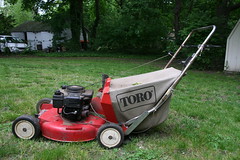 Amid the many indicators that summer has finally arrived – barbecues…Fourth of July parades…flip-flops and sun block — here’s one signpost you won’t be seeing much of this year: the proverbial summer job. New figures from the U.S. Bureau of Labor Statistics show that only one in three teenagersnow holds a summer job.
Amid the many indicators that summer has finally arrived – barbecues…Fourth of July parades…flip-flops and sun block — here’s one signpost you won’t be seeing much of this year: the proverbial summer job. New figures from the U.S. Bureau of Labor Statistics show that only one in three teenagersnow holds a summer job.
The decline in teen employment has been precipitous. Whereas in 1978, nearly 60 percent of 16- to 19 year-olds were employed during the summer months, by 2001, that number dropped to slightly over 50 percent. It now hovers just below 30 percent.
In some ways, this trend shouldn’t be all that surprising. Many low-skilled summer jobs — things like mowing lawns, waiting tables and manning cash registers — are now being done by other workers struggling to make ends meet in the current recession: older workers, immigrants or college graduates shouldering massive debts.
And yet, the death of the summer job is troubling all the same. For starters, when you disaggregate the numbers by race and income, you see that the groups least likely to be employed in summer jobs are blacks and Hispanics from lower-income families. These are precisely the individuals for whom early work experience is most closely tied to success in the labor market, largely because they are less likely to attend college. In a country with the highest level of inequality in the advanced, industrialized world, the last thing we need is to exacerbate the income gap between rich and poor.
But there’s also a sociological reason for alarm.
Read the rest of this post at The Washington Post’s She The People blog…
Image: Old Mower by Cavalier92 via Flickr under a Creative Commons license


